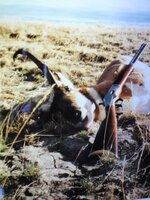Bronze Lifetime
- Messages
- 478
- Reactions
- 319
I'm curious what would happen if you mixed fast and slow burning powders. The idea would be to prevent an early pressure spike and teetering coming from using only fast powder, and to prevent too much slow burning powder burning after it leaves the barrel. And ultimately be able to achieve higher velocities at lower maximum pressures.
Does this make sense, has anyone tried this?
Does this make sense, has anyone tried this?














